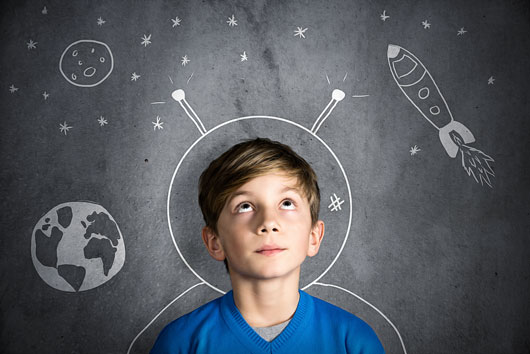
What are indigo children characteristics? Wait—what the heck are indigo children? If you tend not to shop in New Age bookstores, then you may have missed the emergence of the indigo children phenomenon. Are these kids who are purple, like Barney, you ask? Well, no, though they are children who are said to have an indigo-colored aura, supposedly born into the next stage of human consciousness. Some are said to possess unusual abilities that sometimes border on the supernatural. As Vice reports, the indigo children phenomenon emerged in the 70s and was coined by the San Diego-based parapsychologist, Nancy Ann Tappe, who published the book Understanding Your Life Through Color in 1982 after she noticed that a large amount of children were being born with indigo auras. This particular color, which was completely new to Tappe, had to mean that a new consciousness had been born. She distinguished these children as a new group of beings that symbolized a shift in our culture and who were misunderstood.
Read Related: Is Your Child Gifted? Latino Kids Less Likely to Be Properly Diagnosed

When Lee Carroll (a channeler) and Jan Tober (his wife and self-help expert) published the book The Indigo Children in 1998 the concept took off and became widely publicized. Indigos, the authors explained, share traits such as a high I.Q., acute intuition, self-confidence, resistance to authority and disruptive tendencies, which are often diagnosed as attention deficit disorder or attention deficit hyperactivity disorder. In other words, to understand the phenomenon of indigo children and its rise in popularity, it´s important to connect it to the medical community´s defining of these two new diseases (ADD) and (ADHD) and the rising cases of children in the U.S. with one or both of these diseases around this time. Ritalin, which is given to children who suffer from this, is a controversial drug that parents complain about due to its side effects. And according to Tappe, Carroll and Tober, many ADD and ADHD sufferers are indigo children.

Indigos are said to possess paranormal abilities such as telepathy and remembering past lives, and believed to be more empathetic and creative than other school age children. The list of indigo children characteristics used to describe them has been criticized for being vague enough to be applied to almost anyone. Although there has yet to be any scientific research crediting the existence of indigo children the concept understandably attracts parents whose children have been diagnosed with learning disabilities and want to believe that their children are special. “All of us would prefer not to have our kids labeled with a psychiatric disorder, but in this case it’s a sham diagnosis,” said Russell Barkley, a research professor of psychiatry at the State University of New York Upstate Medical University in an interview with The New York Times. “There´s no science behind it. There are no studies.”
Whatever your spiritual beliefs, parents of children with attention deficit disorder must realize that today Ritalin and other strong mood alerting drugs are not the only way to treat these disorders. Since it affects an ever growing percentage of school age children, it is no longer viewed as a social stigma, but a treatable one with a community support system.











